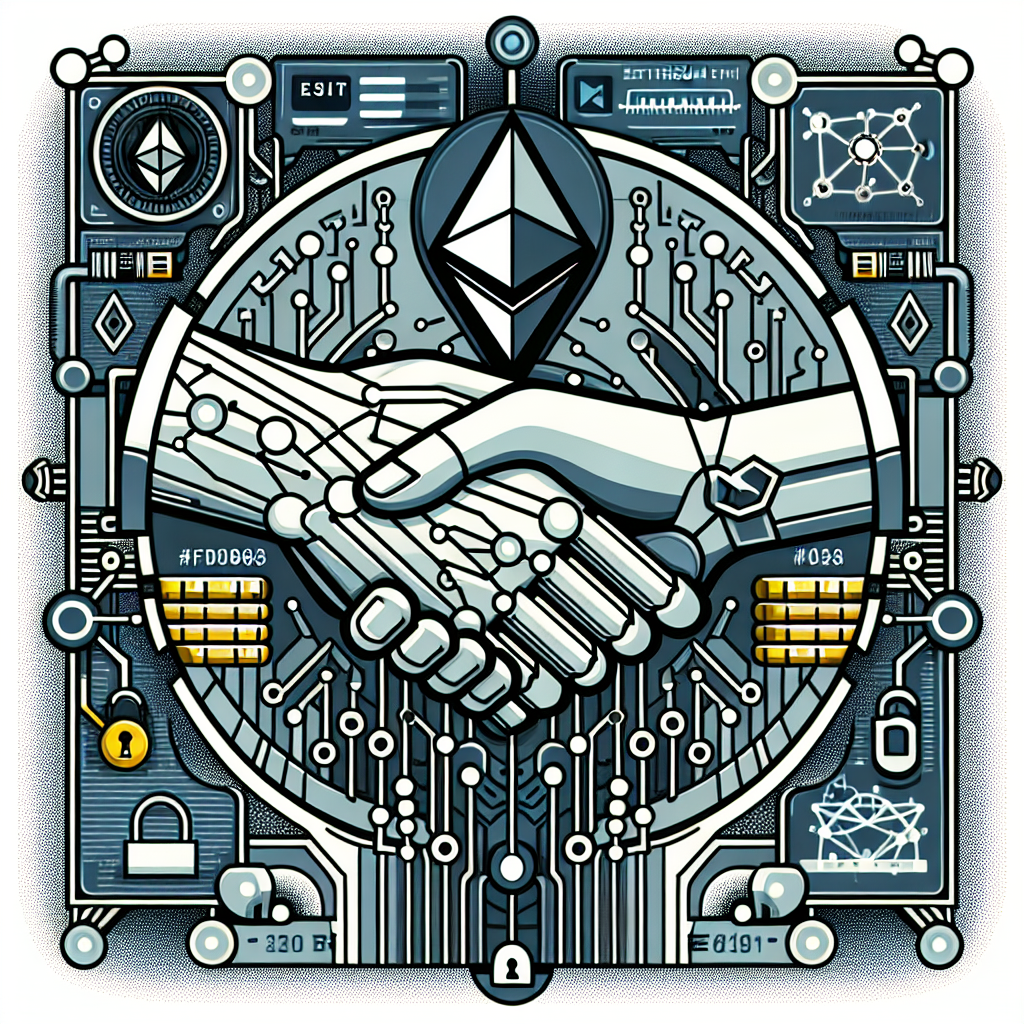At the recent DAS London conference, the intersection of blockchain and artificial intelligence stood out as a driving theme, moving the conversation beyond traditional decentralized finance (DeFi). This paradigm shift was championed by J.T. Rose of Eigen Labs, who asserted that crypto’s next significant leap would not be in DeFi, but in “verifiable AI.” According to Rose and other leading voices, the future is not just about programmable autonomy but about trust — ensuring that the actions and outputs of intelligent, agentic systems can be transparently verified and audited on public blockchains like Ethereum. This article examines the significance of this movement, its major use cases, the technologies powering it, and how the crypto ecosystem is poised for another transformation led by AI verifiability.
The Central Challenge: Trust in the Age of AI
Artificial intelligence is rapidly evolving, with autonomous agents handling everything from trading strategies to customer communications. Yet, according to Rose, the greatest hurdle for AI over the next decade is not capability, but trust. As businesses and consumers hand increasing agency to digital systems, the crucial question arises: How can anyone be sure these AI agents are acting as promised, without hidden errors, data leaks, or manipulation?
Rose encapsulates the issue, stating, “Without a mechanism to make AI verifiable up and down the stack — from inference and benchmarking to training and identity — we’ll never hit escape velocity for the agentic era.” That is, without convincing proof that AI systems are both doing what they claim and acting within prescribed boundaries, adoption will remain stuck in a prototype phase, never fully transitioning to trusted infrastructure. This is especially relevant with AI’s growing tasks in finance, contracts, communications, and gaming, where errors or malfeasance can be costly.
Eigen Labs’ Approach: Programmability Meets Provability
To address the trust issue, Rose describes Eigen Labs’ “cloud-like” service stack, which consists of data, compute, and inference layers, all underpinned by crypto-economic security. Here is how the concept works: Developers get the flexibility of public-cloud services — the ability to run dynamic and powerful off-chain computation — but they gain the cryptographic proofs and assurances of on-chain transactions before any funds transfer or system state update occurs on blockchains like Ethereum.
This approach attempts to break the core trade-off of current crypto systems. Today, smart contracts on blockchains are provable and reliable, but constrained to avoid high costs and limited resources. Off-chain computation is more powerful and cost-effective, but lacks transparent trust. By combining these, Eigen aims for “programmability like a cloud, assurances like a blockchain.”
Key Use Cases Powering Verifiable AI
Rose outlines three immediate and compelling applications for this verifiable AI paradigm:
- Autonomous Trading Agents: Self-executing trading bots that must prove adherence to risk rules, preventing unwanted strategies or unauthorized trades, and providing post-trade auditability for investors and regulators alike.
- Agent-to-Agent (A2A) Payments: Systems where one AI agent’s work (such as data labeling, research, or remote computation) triggers automated, on-chain payments only if cryptographic receipts and proofs of correct execution are submitted.
- Gaming with Attestable Outcomes: Next-generation games where in-game events and scores can be proven on-chain, eliminating cheating and allowing for trustless wagering, tournament settlements, and asset transfers.
Each use case demonstrates how programmable intelligence, when combined with verifiable proofs, unlocks both utility and new business models. This opens a range of possibilities — from risk-managed hedge funds operated by autonomous code, to decentralized freelance marketplaces where AI completes tasks and receives instant, trust-minimized payment.
The Trust Stack: How Verifiable AI Is Built
The technical foundation for verifiable AI is multi-layered. Rose and his counterparts break down the stack into two critical questions:
- Authorization: Is the agent allowed to perform an action? Runtime policy enforcement ensures that agents can never act outside prescribed “guardrails.”
- Execution Proof: Did the agent do what it was supposed to? Mechanisms like cryptographic proofs, attestations, and auditability demonstrate that the off-chain actions matched the on-chain intent.
David Sneider, co-founder of Lit Protocol, highlights similar ideas. In the Lit Protocol framework, agents can only access sensitive secrets (authentication keys or data) if policy conditions are met in real time, such as, “Send an email or buy a bitcoin only if this criteria is satisfied.” This is enforced through a secret management network using Secure Enclaves (TEE) and Multi-Party Computation (MPC), meaning even privileged internal processes cannot override the rules.
The result is a complementary relationship: Protocols like Lit answer, “Can the agent act on my behalf?” while platforms like EigenCloud answer, “Can I trust the result of this offchain computation?” Properly layered, these form a trust stack that makes ambitious agentic systems both programmable and trustworthy.
Mechanisms of Verifiability: From TEEs to ZK Proofs
A range of technical primitives underpin these new trust architectures:
- Trusted Execution Environments (TEEs): Hardware-secured enclaves that isolate sensitive computation from the rest of the system, providing strong guarantees about code integrity and data privacy, yet not immune from sophisticated exploits.
- Crypto-Economic Slashing: Staking-based incentives and punishments, whereby validators or operators risk losing locked assets if found to have cheated or mishandled a process.
- Zero-Knowledge (ZK) Proofs: Advanced cryptography that allows one party to prove, in a privacy-preserving way, that they have correctly performed a computation or verified a data property without revealing the actual inputs or sensitive details.
Within this context, protocols emit success/failure signals and policy compliance proofs, providing composable building blocks for larger applications. The long-term focus is on making these attestations portable and privacy-respecting — so, for example, an agent proven to be compliant in one application need not be re-audited for every new context, thanks to standards and shared registries such as ERC-8004 and agent-to-agent communication protocols.
Ethereum as the Trust Anchor
Despite the potential for cross-chain and multi-infrastructure deployments, both Rose and Sneider agree that Ethereum is the natural “neutral trust anchor” for verifiable AI. Ethereum’s decentralized and widely validated ledger provides not only the transparency required for public verification but also a thriving ecosystem of protocols, tools, and standards.
Current Ethereum statistics reveal that between two and three million ETH are restaked, predominantly with EigenLayer, reflecting both the growth in blockchain security primitives and the appetite for new forms of on-chain utility. As this market matures, trust-minimized AI will benefit from Ethereum’s extensibility, composability, and reputation as the global settlement layer for decentralized computation.
Consumer and Industry Impact: Everyone Gets a “Quant” in Their Pocket
As the trust stack matures and developer tools proliferate, the long-term vision is for everyday users to access powerful, autonomous financial and service agents. According to Sneider, “Everybody is going to have essentially a quant in their pocket to manage their funds.” This next-generation technology stack will empower individuals and institutions alike, offering automated portfolio management, real-time risk controls, intelligent assistants, on-chain games with provable fairness, and more.
The implication is profound: AI agents will become not only capable but reliable counterparts for financial operations, gaming, governance, compliance, and digital identity — all anchored in verifiable, trust-minimized infrastructure.
From Prototype to Production: The Road Ahead
While many of these ideas are just entering the prototype phase, both technical and market momentum point toward rapid progress. Key milestones will include:
- Widespread adoption of programmable guardrails and runtime policy enforcement in agentic systems.
- Integration of verifiable compute layers capable of submitting transparent, auditable work receipts to public ledgers.
- Standardization of privacy-preserving attestations and proofs for interoperability between agents, protocols, and applications.
- Continued migration of high-stakes financial, gaming, and business operations to platforms secured by crypto-economic incentives and on-chain accountability.
If all these pieces come together, the industry will move beyond simple DeFi primitives to a world where intelligent and autonomous software agents are not just possible, but provably honest and effective partners in digital life.
Conclusion: Verifiable AI — The Next Growth Driver for Crypto
The era of programmable, yet trustworthy, AI on decentralized infrastructure is rapidly approaching. As Rose aptly summarizes, “The next growth driver for crypto won’t be DeFi — it’s verifiable AI, and it’ll happen on Ethereum.” This new paradigm promises to build a bridge between off-chain innovation and on-chain guarantees, fundamentally changing the future of finance, digital trust, and AI-powered agency. For developers, investors, and forward-thinking users, now is the time to watch — and build — at the intersection of verifiability and programmability, where the agentic era will soon take shape.



















